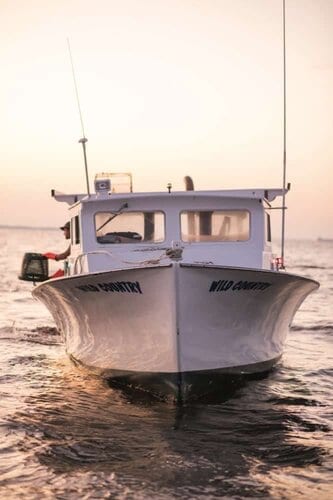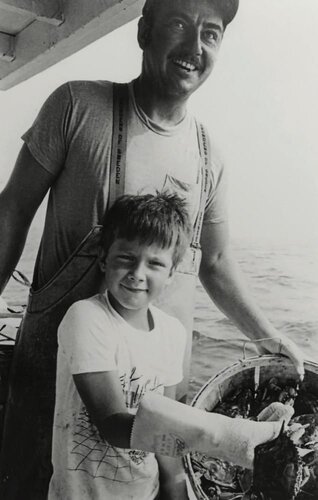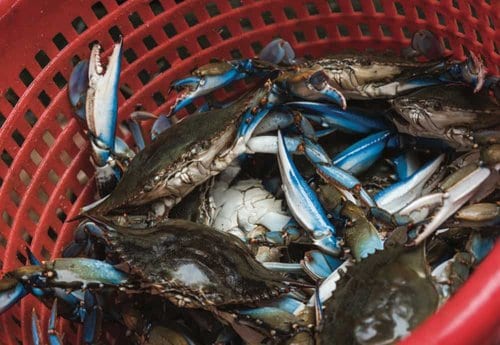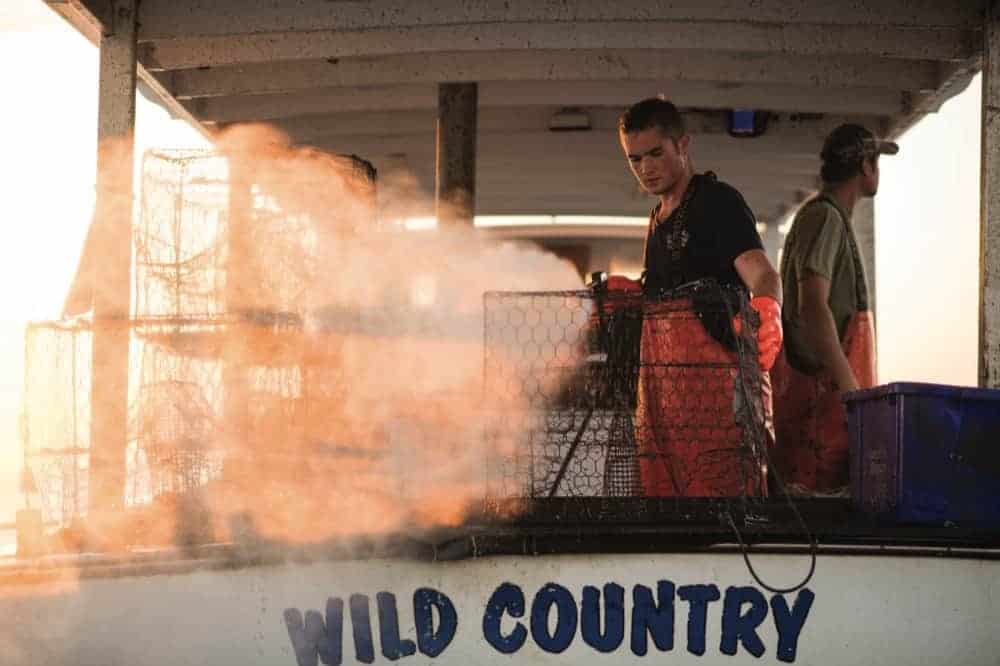For centuries, any visit to Annapolis City Dock guaranteed two things: the sight of workboats and the opportunity to buy some of their fresh-caught seafood.
Indeed, more than a dozen oyster-canning and crab-picking houses, most notably the Annapolis Canning Company and the Chesapeake Seafood Company, dominated the area in the late 1800s. The Annapolis Market House at Market Space— where I fondly remember being periodically taken as a boy in the late 1980s to buy a fried fish lunch—was built in 1857. We’d eat our meal sitting right on the seawall, likely within sight of whichever workboat caught the fish.
But those days are long gone. In April 2002, the city ordered Alexander “Skip” Parkinson, a crabber, to leave his permanent slip under its first-come, first-served docking policy, making him the last waterman, and his boat the last workboat, at City Dock. In many ways, Parkinson’s departure signaled that City Dock had officially become “Ego Alley”, a nickname that reflects the constant flow of sailboats, yachts, and paddleboarders on the harbor. And to many, it suggested that the centuries-old tradition of watermen in Annapolis was gone as well.

One Saturday last August, I paddleboarded from Spa Creek in Annapolis to Back Creek in Eastport, landed on Cap’n Herbie Sadler Watermen’s Park (next to the Annapolis Maritime Museum), and walked barefoot across a short stretch of gravel to Wild Country Seafood. There, I met Pat Mahoney, Jr.—the “last waterman
of Annapolis.”
Mahoney not only owns Wild Country, along with his father, Pat Mahoney Sr., but he catches the seafood they sell and takes great pride in keeping the “last waterman” title in the family. For him, the word means more than just making a living from the Bay. “It’s about keeping a tradition alive, adapting to challenges, and loving the water,” says Mahoney.
A Family Tradition
Born and raised in Eastport, Mahoney, now 40, developed a keen appreciation for making a living from the Chesapeake Bay’s bounty thanks to his father. A lifelong waterman himself, Pat Sr. first learned the ins and outs of the seafood business as a teen by helping steam crabs at Sadler’s Seafood Market and Marine Railway, which was opened in 1916 by Herbie Sadler (namesake of the aforementioned Watermen’s Park.)Mahoney fondly recalls catching his first crab in Carr’s Creek as young boy, while trot-lining with Pat Sr. He decided to turn his hobby into an occupation by obtaining his commercial license at the ripe old age of 12. He crabbed and fished from his own boat—a 20-foot skiff custom-built by his uncle, Bob Mahoney, that very memorably once actually sunk under the weight of too many fish. He soon began working every day with his father on what are now the last commercial workboats operating out of Eastport: Wild Country, a Hughes 1980 crab boat, and Baby Boy, a Deltaville Deadrise 1970 oyster boat.

Selling their catch on the wholesale market seven days a week, the Mahoneys had good and bad years—and they were always unpredictable. As Mahoney explains, environmental variables including weather, temperatures, and dead zones affect supply, while bait availability and rising operating costs impact the harvest and its profitability. Plus, the whims of the market and negotiation-prone middlemen keep prices fluctuating daily.
“There’s not much you can control when you make your living from the water,” say Mahoney. “And you can only catch so much due to time and regulations, so a bad year for crabs or oysters or fish or anything else means a bad year’s pay.”
That is why the Mahoneys decided to control—or more accurately, eliminate—the one variable that
they could.
From Bay to Bushel
In what they knew was a high-risk move, the Mahoneys decided to leave the wholesale market and open
Wild Country Seafood, an old-fashioned, carry-out seafood store, on June 5, 2009.
“It was just something that I always wanted to do—selling direct to the consumer,” says Mahoney, who fondly recalls opening just three days after his second son, Hunter, was born, and making Wild Country’s first dollar (which he still has) from a sale to his father in-law, Stuart Cordish. “I felt happy and hopeful at the opening—all of the stress and nervousness was during the work phase.”
Aiming to bring back memories of Sadler’s, which until closing in 1975 was located at the current site of O’Leary’s Restaurant, and Herbie’s Crab Shack, which was right on Second Street, Pat Jr. and Sr. decided to put Wild Country right in the heart of Maritime Eastport. Equally important, they chose to forgo any frills and do one simple thing: Sell the seafood they catch year-round.

For the Mahoneys, this means getting on the water by 3 a.m. during crab season (April to November) and by 5 a.m. during rockfish and perch season (January to November) and oyster season (October to March). They also harvest Patty’s Fatty’s, the aquaculture oysters they farm, 365 days a year, and staff or process the day’s catch at the store. (Wild Country’s regular operating season runs May 15–September 30.)
Despite the long hours, the workload also means higher profit margins and the ability to interact with the people who eat their catch.
For customers, Wild Country offers access to seafood that’s not only affordable—Mahoney tries to keep prices about 20 percent cheaper than other retailers—but also as fresh and local as possible, sourced from within roughly 10 miles or less. And while Mahoney says that almost all customers discover the store by word of mouth, he reports that it’s enjoyed steady growth over its decade in business. He notes that roughly 80 percent of his customers are locals and 20 percent tourists, and that a good number of folks from both groups discover him after enjoying Patty’s Fatty’s at one of the two local restaurants that offer them, Boatyard Bar and Grill and Blackwall Hitch Annapolis.
The oyster-growing venture is the most recent example of Mahoney’s resourcefulness. In 2015, he and landowner John Colhoun applied for and received a Shellfish Aquaculture Lease from the Maryland Department of Natural Resources. Leasing a roughly 1.1-acre area on the Rhode River within sight of Ivy Neck Farm (the historic farm that Colhoun’s family has owned since the 17th century), they began culturing Eastern Oyster spat in tanks, transplanting them into cages on the river bottom, and harvesting them after a growing period. And while there have been a few interruptions (for example, the Maryland Department of the Environment shut down shellfish operations in the Rhode River for a time in June 2017 due to E. Coli concerns), Mahoney has expanded his operation, leasing 35.4 acres of West River bottom with his father in 2017 for additional aquaculture.
As Mahoney explains, “Aquaculture makes sense because it allows me to cultivate a high-quality product that’s not only harvestable year-round but also supports the sustainability of both local seafood and my own business.”

The Next Generation (Maybe)
Leasing river bottom, along with keeping Wild Country running on all cylinders, supports the long-term goal that’s most important to Mahoney: being able to hand a successful business down to his three children (Austin, 13; Hunter, 11; and Riley, 10), whom he hopes will become the third generation of Mahoney watermen.
“It’s getting harder and harder to make a living as a waterman so I don’t want to put any pressure on my kids,” says Mahoney. “But it’s pretty clear that they’re beginning to love the outdoors and the water just about as much as I do.”
When not working the water or minding the store, Mahoney spends much of his free time tending to and playing on his farmstead in Dunkirk, with his wife of 12 years, Melissa, and his kids, taking them crabbing and fishing in his favorite spots—as he puts it, “wherever the crabs are swimming and the rockfish are biting.”
"last" - Google News
June 04, 2021 at 12:45AM
https://ift.tt/3cfW9el
The Last Watermen - Chesapeake Bay Magazine
"last" - Google News
https://ift.tt/2rbmsh7
https://ift.tt/2Wq6qvt
Bagikan Berita Ini















0 Response to "The Last Watermen - Chesapeake Bay Magazine"
Post a Comment